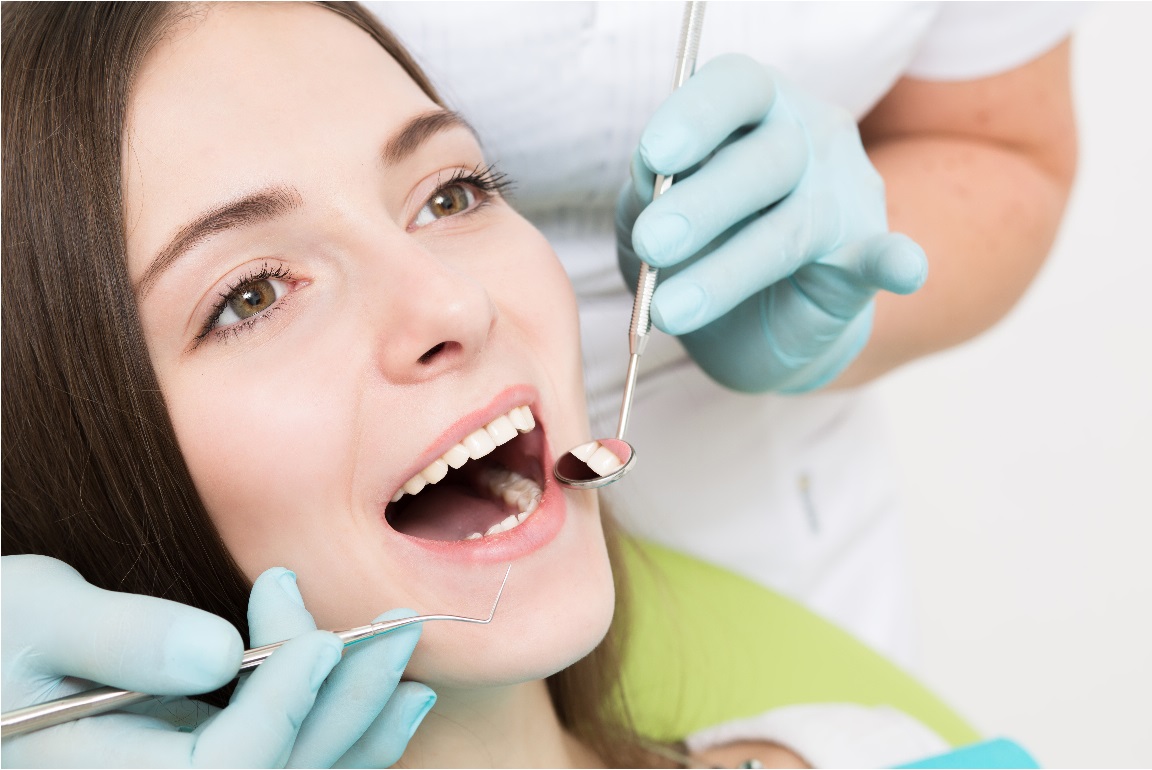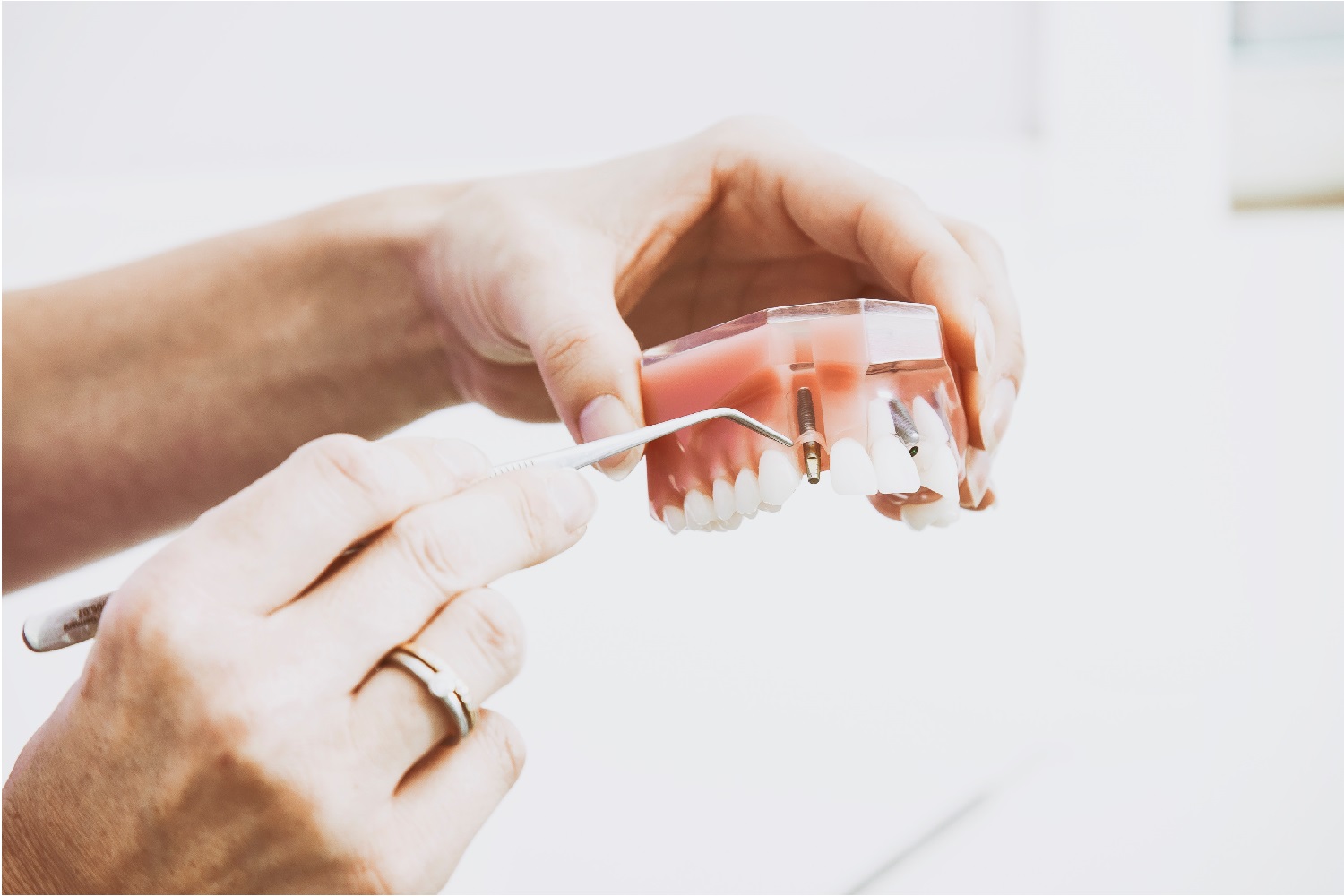Cosmetic Dentistry
Over recent years, we’ve seen a dramatic interest in cosmetic dentistry. We
realize that having a healthy, bright, beautiful smile allows us to smile with
confidence. Cosmetic dental enhancements can:
- Change the size, shape, and alignment of certain teeth.
- Fill in unattractive spaces between teeth.
- Improve or correct bites.
- Lighten or brighten the color of teeth.
- Repair decayed, broken, cracked, or chipped teeth.
- Replace missing teeth.
- Replace old, unattractive dental treatments.
Whitening
Tooth whitening (or bleaching) is a simple, non-invasive dental treatment used to
change the color of natural tooth enamel and is an ideal way to enhance the beauty
of your smile.
Because having whiter teeth has now become the number one aesthetic concern of most
patients, there are a number of ways to whiten teeth. The most popular method
is using a home tooth whitening system that will whiten teeth dramatically.
Since tooth whitening only works on natural tooth enamel, it is important to
evaluate replacement of any old fillings, crowns, etc. Replacement of any
restorations will be done after bleaching so they will match the newly bleached
teeth.
Tooth whitening is not permanent. A touch-up maybe needed every several years,
and more often if you smoke, drink coffee, tea, or wine.
Reasons for tooth whitening:
- Fluorosis (excessive fluoridation during tooth
development).
- Normal wear of outer tooth layer.
- Stained teeth due to medications.
- Yellow, brown stained teeth.
What does tooth whitening involve?
This type of tooth whitening usually requires two visits. At the first
appointment, impressions (molds) will be made of your teeth to fabricate custom,
clear plastic, trays.
At your second appointment, you will try on the trays for proper fit, and adjustments
will be made if necessary. The trays are worn with special whitening solution
either twice a day for 30 minutes or overnight for a couple of weeks depending on
the degree of staining and desired level of whitening. It is normal to
experience tooth sensitivity during the time you are whitening your teeth, but it
will subside shortly after you have stopped bleaching.
You will receive care instructions for your teeth and trays, and be encouraged to
visit your dentist regularly to help maintain a beautiful, healthy, white smile.
Britesmile– One Hour Teeth Whitening
BriteSmile is a revolutionary technology clinically proven to get your teeth their
whitest. Over 800,000 happy clients worldwide agree!
Veneers
Veneers are very thin pieces of durable, tooth shaped porcelain that are custom made
(for shape and color) by a professional dental laboratory. They are bonded
onto the front of teeth to create a beautiful and attractive smile.
Veneers can completely reshape your teeth and smile. They can often be
alternatives to crowns and the ideal solution in treating many dental conditions.
As with most dental restorations, veneers are not permanent and may someday need
replacement. They are very durable and will last many years, giving you a
beautiful long lasting smile.
Reasons for porcelain veneers:
- Cosmetically, to create a uniform, white, beautiful
smile.
- Crooked teeth.
- Misshapen teeth.
- Severely discolored or stained teeth.
- Teeth that are too small or large.
- Unwanted or uneven spaces.
- Worn or chipped teeth.
What does getting porcelain veneers involve?
Getting veneers usually requires two visits to complete the process, with little or
no anesthesia required during the procedure. The teeth are prepared by lightly
buffing and shaping the surface to allow for the thickness of the veneer. A
mold or impression of the teeth is taken and a shade (color) will then be chosen by
you and the dentist.
On the second visit the teeth will be cleansed with special liquids to achieve a
durable bond. Bonding cement is then placed between the tooth and veneer and a
special light beam is used to harden and set the bond.
You will receive care instructions for veneers. Proper brushing, flossing and
regular dental visits will aid in the life of your new veneers.
Lumineers
Lumineers are contact lens-thin and are placed over existing teeth
without having to remove painful tooth structure (unlike traditional veneers.)
Lumineers are the painless, permanent cosmetic solution for stained, chipped,
discolored or misaligned teeth.
Your Lumineers dentist can apply these contact lens-thin “smile shapers” to
teeth without any grinding or shaving, transforming teeth into a naturally beautiful
smile that looks perfect for every individual. Lumineers can even be placed over
existing crown or bridgework without having to replace them.
Lumineers can only be made from patented Cerinate porcelain unavailable
anywhere other than the Cerinate Smile Design Studio. In just 2-3 visits you can
have a custom-made smile that is clinically proven to last over 20 years – and it is
completely reversible since your natural tooth structure is still intact! Get your
perfect smile today!
Contact-Lens-Thin to Save Your Tooth Structure
- No shots or anesthetic required — procedure is
entirely pain-free
- Little to no reduction of tooth structure – you
keep your natural teeth intact!
- Unlike veneer procedures that require
grinding, cutting and removal of tooth structure
- Patented porcelain — from Den-Mat
Corporation, a trusted name in dentistry and oral care
- Minimal preparation required
- No post-operative sensitivity
- Only two visits necessary
- Extremely
natural-looking because they are so thin
(approximately .2 mm) and translucent - patented
porcelain
- No temporaries
required
- Restore and
strengthen teeth. Help prevent wear
-
Extraordinarily b. Clinically proven to
last up to 16 years
- A viable
alternative to braces in many cases
- Can
be placed over crowns and
rejuvenate old dental bridge
work
-
No micro-leakage or
micro-cracking
- Evolving from Cerinate
porcelain restorations,
lauded as one of the top
100 dental products for
2002 by Dentistry Today,
a highly-respected
publication
Crowns
A crown (or cap) encases the entire tooth surface, restoring it to its original shape
and size. A crown protects and strengthens a tooth that cannot be restored
with fillings or other types of restorations.
Although there are several types of crowns, porcelain (tooth colored crown) are the
most popular. Crowns are highly durable and will last many years, but like
most dental restorations, they may eventually need to be replaced.
Porcelain crowns are made to match the shape, size, and color or your teeth giving
you a natural, long-lasting beautiful smile.
Reasons for crowns:
- Broken or fractured teeth
- Cosmetic enhancement
- Decayed teeth
- Fractured fillings
- Large fillings
- Tooth has a root canal
What does getting a crown involve?
A crown procedure usually requires two appointments. Your first appointment
will include taking several highly accurate molds (or impressions) that will be used
to create a temporary crown which will stay on your tooth for approximately two
weeks.
While the tooth is numb, the dentist will remove any decay and shape the surface to
properly fit the crown. Once these details are accomplished, your temporary
crown will be placed with temporary cement and your bite will be checked.
At your second appointment your temporary crown will be removed and your new crown
will be carefully placed to ensure the spacing and bite are accurate.
You will be given care instructions and encouraged to have regular dental visits to
check your new crown.
Porcelain Inlays
An inlay restoration is a custom made filling made of tooth-colored porcelain.
Porcelain inlays are popular because they resemble your natural tooth. A
porcelain inlay is made by a professional dental laboratory then permanently
cemented into your tooth.
Inlays can be utilized to conservatively repair teeth that have
large defective fillings or have been damaged. They are more conservative than
crowns because less tooth structure is removed in the preparation of inlays.
Although highly durable, as with most dental restorations, inlays are not always
permanent and may someday require replacement.
Reasons for inlay restorations:
- Broken or fractured teeth
- Cosmetic enhancement
- Decayed teeth
- Fractured fillings
- Large fillings
What does an inlay involve?
An inlay procedure usually requires two appointments. Your first appointment
will include taking several highly accurate impressions (molds) that will be used to
create your custom inlay and a temporary restoration.
While the tooth is numb, the dentist will remove any decay and/or old filling
materials and thoroughly clean your oral cavity. A temporary filling will be
applied while your inlay is made by a dental laboratory.
At your second appointment your new inlay will be carefully and precisely cemented
into place. A few adjustments ensure a proper fit and that your bite is
comfortable.
You will receive care instruction at the conclusion of your treatment. Good
oral hygiene practices, a proper diet, and regular dental visits will aid in the
life of your new inlay.
Porcelain Onlays
An onlay restoration is made of composite material, gold, or tooth-colored porcelain
and popular because they also resemble your natural tooth. An onlay is
sometimes referred to as apartial crown. Porcelain onlays
aremade by a professional dental laboratory, then permanently cemented onto
the tooth.Onlays are an ideal alternative to crowns (caps) because less tooth
structure is removed in the preparation of onlays.Onlaysare
essentially identical toinlayswith the exception that one or more
of the chewing cusps have also been affected and need to be included in the
restoration.
As with most dental restorations, onlays are not always permanent and may someday
require replacement.
Reasons for onlay restorations:
- Broken or fractured teeth
- Cosmetic enhancement
- Decayed teeth
- Fractured fillings
- Large fillings






